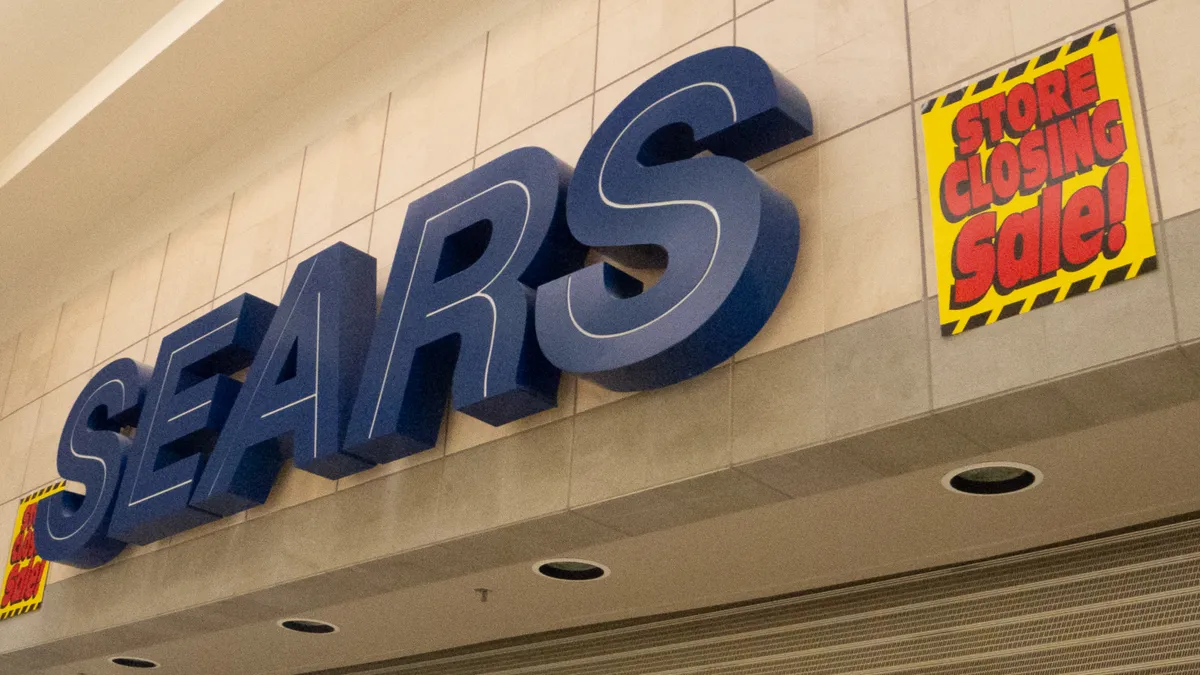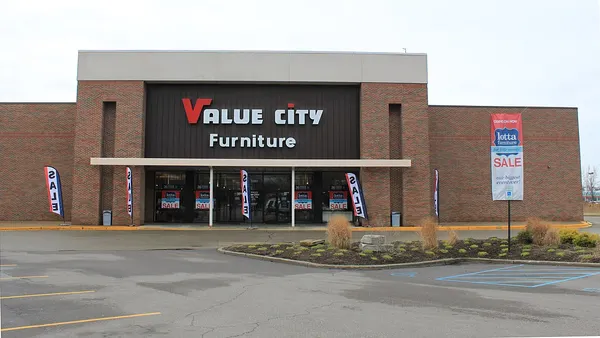Dive Brief:
- The corporate husk of the old Sears is still trying, and struggling, to pay its bills in Chapter 11, more than two years after Eddie Lampert acquired the remaining Sears and Kmart stores from the company he used to run.
- According to a court presentation by Sears Holdings, the company only has $18.3 million in cash as of April 10 to pay more than $97 million in remaining administrative claims and taxes, along with millions of dollars in other liabilities.
- All told, Sears Holdings is short $80.8 million on its obligations, which includes professional fees, vendor payments and other claims.
Dive Insight:
More than two and a half years have passed since Sears Holdings filed for Chapter 11, but the case and the financial drama around it have yet to be resolved.
In terms of bankruptcy professional fees, Sears is the most expensive retail bankruptcy in recent years of elevated filings in the industry, according to Debtwire data shared with Retail Dive earlier this year.
Driving that expense in part is the sprawling corporate complexity engineered by Lampert during his time as Sears Holdings' chief executive, majority shareholder (through his ESL Investments fund), biggest lender, major landlord and other entanglements. By the time the company filed for bankruptcy, it was a byzantine web of corporate financialization built atop an already massive and broad corporate empire that preceded Lampert.
As Enrique Acevedo, a director at M-III Advisory Partners currently advising Sears Holdings, put it in a recent filing, "Sears Holdings Corporation was a complex organization, with a long history and vast, sprawling organizational structure composed of numerous divisions, projects, and teams and operated by a multitude of people pursuant to many and varied practices and processes."
Lampert broke ties with Sears Holdings when he took on the company's remaining stores and created a new company, Transformco, to hold them. Without stores or operations, Sears Holdings has essentially been a corporate husk ever since. Yet it is still on the hook for legal bills and vendor claims made while it had stores to operate.
Suppliers trying to get payment from Sears Holdings during its Chapter 11 have long worried that the entity was administratively insolvent, meaning its bills in bankruptcy exceeded the value of its assets. The complexity and legal tussles throughout the case — including with Transformco — have added to the company's massive pile of legal and consultant bills.
In fact, Sears Holdings is still wrangling over money with Transformco. In Acevedo's filing, the consultant detailed how M-III has been trying to recover funds from Transformco on behalf of Sears Holdings, including cash in overseas accounts cleared out while Lampert was still in charge of the old Sears.
While Sears Holdings no longer is a retailer in any real sense, its current cash shortfall has an impact on the ecosystem of vendors that built up around it and sells to other retailers. As with Toys R Us, suppliers burned in the Sears bankruptcy have reason to be leery of selling to distressed retailers in danger of bankruptcy, which can magnify those retailers' woes.
As for Transformco, which operates the last Sears and Kmart stores in the country, it keeps shrinking in store count, as Sears Holdings did under Eddie Lampert.














